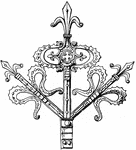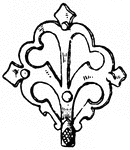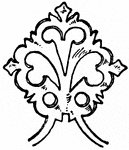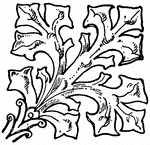Clipart tagged: ‘Hinge’
Atmospheric Pressure
"The pressure of the atmosphere may be easily shown by the tube and piston. suppose there is an orifice…
Auditory Nerve
"a, the osseous septum grooved for the passage of the cochlear nerve b, which terminates by a free end…

Cardo
A hinge or pivot. The first figure, in the annexed woodcut, is designed to show the general form of…
Door Hinge
A jointed or flexible device that allows the turning or pivoting of a part, such as a door or lid, on…

Door Style Hinge
A hinge is a type of bearing that connects two solid objects, typically allowing only a limited angle…

Gothic Hinge
The gothic hinge is found on a church door in Viersen, Germany. It is an extended strap hinge that is…

Gothic Hinge
This gothic hinge comes from a door of a cabinet in a town-hall in Zwolle, Netherlands. It is a strap-hinge…

Renaissance Hinge
This Renaissance hinge is found in a town-hall is Augsburg, Germany. It is a 17th century design.

Termination of Hinge
This termination of hinge is found in a town-hall in Munster, Germany. It terminates as a leaf.

Termination of Hinge
This termination of hinge is found in a town-hall in Munster, Germany. It terminates as a leaf.

Termination of Hinge
This termination of hinge is found in Gelnhausen, Germany. It is a 15th century design that terminates…

Roman hinges
"The Greeks and Romans used hinges exactly like those now in common use. The following cut exhibits…

Oyster
"Anatomy of the Oyster. A. Hinge or anterior umbonal end of the left valve of an adult oyster, upon…




